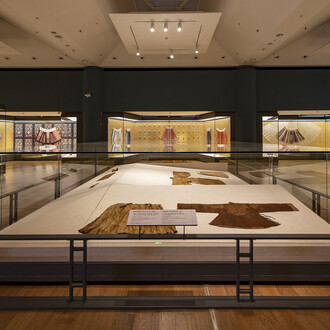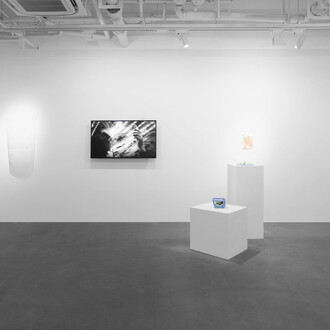Amy Li Gallery is delighted to announce the opening of Gao Qian’s very special solo exhibition, “Forbidden Flowers”, on 23 September 2017 at 4 pm. This exhibition represents the artist’s completely new advancement and innovation, and shows 14 works created in the past two to three years (including painting, installation and integration of materials).
Gao Qian is currently a full-time artist with the creative art department of the Chinese National Academy of Arts. She is also a representative artist of the “new fine brush” movement. Steeped in the essence of tradition, Gao Qian is a rigorous and excellent artist of the highest order. She has never been satisfied with simply expressing technique, but has always insisted on adopting an “ideas first” method of creating art, whether it be, for example, an infatuation with the caressing of an object, or the realization of life’s vitality, or the associative construction of an artistic synesthesia, or the rumination on classical script, or the lamentation of the ephemera of fireworks and the retreat of prosperity. Gao Qian’s works are gentle and reserved, appealing and exquisite, suffused with details which both fascinate and encourage reflection. At the same time, her works are notable for their revelation of an enchanting feminine spirit as well as the ambience of a private and personal boudoir. These subtle observations, profound meditations and restrained metaphors together create the unique framework of Gao Qian’s artistic practice. And this framework is the consummate continuation of the authentic quality and style of Chinese artistic tradition; at the same time it allows the delicate flowering of the emotions and thinking of individualism. To Gao Qian, there is no simple linear dialogue between the past and present; instead the past and present are mutually corroborative and reciprocally generative, and cannot be fixed or differentiated. This kind of creative philosophy in the context of the contemporary ‘fine brush’ movement is unique.
Although Gao Qian had long ago attained the highest levels of achievement in the ‘fine brush’ painting language, she has not rested on her laurels. Apart from painting, she has begun to break through barriers and search for new chapters. Painting is one of the oldest art forms, and it represents the interconnectivity between the hand, the heart and the brain, as well as the integration between touch and feeling. It has been described by Alain Badiou and Barbara Cassin as a system of passionate and ardent thinking which has endured till today. Despite the countless predictions of its demise, painting still has a very strong life force.
Especially in China, painting is still regarded by a majority of the art audience as the most reliable, acceptable and legitimate art form. In this regard, Gao Qian is still one step ahead of the art audience, and has found media and channels apart from painting to continue to express her knowledge and emotions. In this exhibition, she has brought associated groups of seldom seen installation works; they embody her recent exploration and research attempts. Through these attempts, we can easily grasp the artist’s aspirations towards unfulfilled perfection. In the process of reaching beyond narrative and material, new ideas are expanded and enriched. These different challenges to the self are continual challenges to the acceptance of the status quo. For example, in the work “Moth”, Gao Qian uses real silk on the paper, within which are cocoons and moths; the work is elevated from a simple two-dimensional statement to a multi-dimensional representation of the passage of time and life cycles, so as to express the process of transformation of a cocoon into a moth.
This encapsulates what is expressed in both ancient Chinese poetry and the writings of Robert Schumann, that the moth struggling free of its cocoon symbolizes humankind’s attempt to break free of restraints and rise up. Through these new artistic attempts, we can see the main thread of Gao Qian’s artistic practice –the observation of objects and the writing of human, and the closer and more detailed the observation, the richer and more varied the result. Such use of metaphor and play - acting, in the brave shattering of the constraints of form and shape, is conspicuous yet not with breaking form and shape itself. This can be said to be the essence of the installations in this exhibition. The audience will, as ever before, be immersed in Gao Qian’s splendid art world. This time, however, there will be even more delights.













